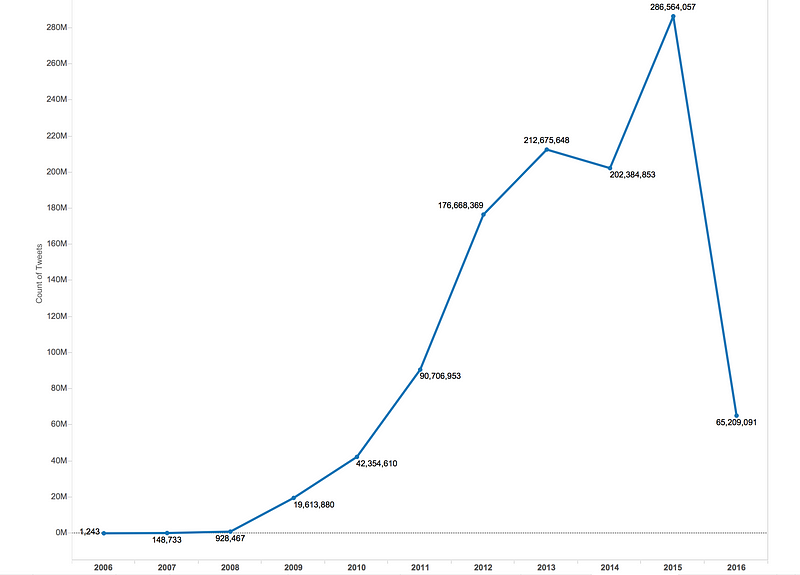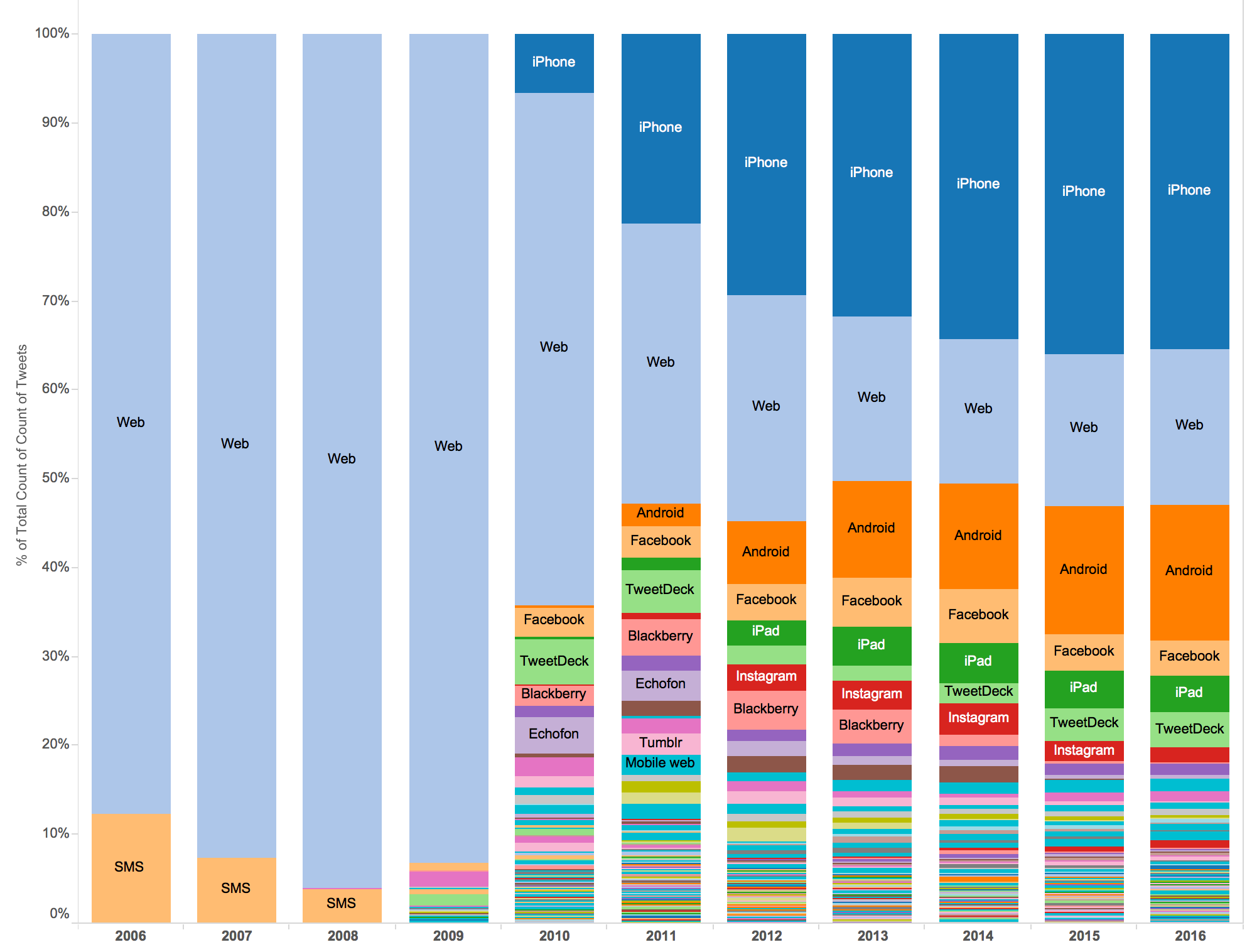I wanted to briefly pick up on Tama Leaver’s comments on Tim Highfield’s excellent bit of speculative forensics* on Twitter’s hashflags — namely that the the use of these hashtag emoji for major events might have the side effect of further degrading the experience of using alternative clients like Tweetdeck.
Just for fun**, for a while now I have been playing around with the ‘source’ field in the metadata attached to the just over 1.1bn indexed tweets posted by accounts that we have identified as Australian since 2006. I’ve been doing this to get a sense of how the Twitter device ecology has changed over time. It’s also a small part of the book project I’m working on with Nancy Baym.
Please consider this a very informal sharing of early findings rather than proper science. There are many caveats with this dataset (basically, it covers the full period of Twitter’s existence, but it is incomplete in various ways due to deleted accounts and the need to comply with Twitter’s API rules, but this is improving over time). Rather than repeating the disclaimers here, though, I’ll refer you back to this earlier piece of mine which also links back to theoriginal blog post by Axel Bruns for some of the information about it. Despite these caveats, there are some very clear patterns which I would expect to broadly hold up at the more dramatic end of the scale regardless of some lumpiness in the data.
To set the scene, here is the chart just showing the total tweets in the dataset for each year:

And here’s the pretty one showing the proportion of tweets that we have indexed for each year that were sent using each client (or ‘source’):

First, the migration (back) to the official mobile apps from the browser (and apps for PC or Mac) is unmistakeable. So too is the evidence that Twitter’s strategy to streamline its brand identity and user experience by channeling users into the ‘official’ clients (whether for the PC browser, iOS, or Android) is clearly working. You’ll recall that, foreshadowed by stern messages to developers and changes to the API rules in 2011, in mid-2012 Twitter made quite significant changes to the API which impacted quite severely and quite deliberately on third party development, particularly the development of apps that provide viable alternatives to the official clients.
As you can see from the pretty rainbow stripes, there are literally thousands of ostensibly distinct tweet sources in the dataset (more than 52,000 by my count), most with less than half a percent of the total tweets for a given year. But many of these are simply the widgets that individual websites use to allow you to tweet directly from their pages. The brief heyday of the alternative third party client was in 2010–2011 and was over by the end of 2012, the year of that infamous crackdown.
So we may have real evidence that the early proliferation and significant take-up of ‘unofficial’ clients like Tweetbot and Echofon, especially for mobile, has become very muted from 2013 on — the API restrictions and the changes to the display rules that were wrapped around them had a real chilling effect, as we’d expect.
And you might be as interested as I was to note that Tweetdeck, the power user’s client of choice, was only ever a niche experience, and while it is a significant niche, it seems to be shrinking in the past couple of years — and it will be interesting to see what happens now that Twitter has reportedly killed off support for the Windows version.
*I think ‘speculative forensics’ should be thing, don’t you?
**Concept of ‘fun’ may be somewhat loosely deployed.